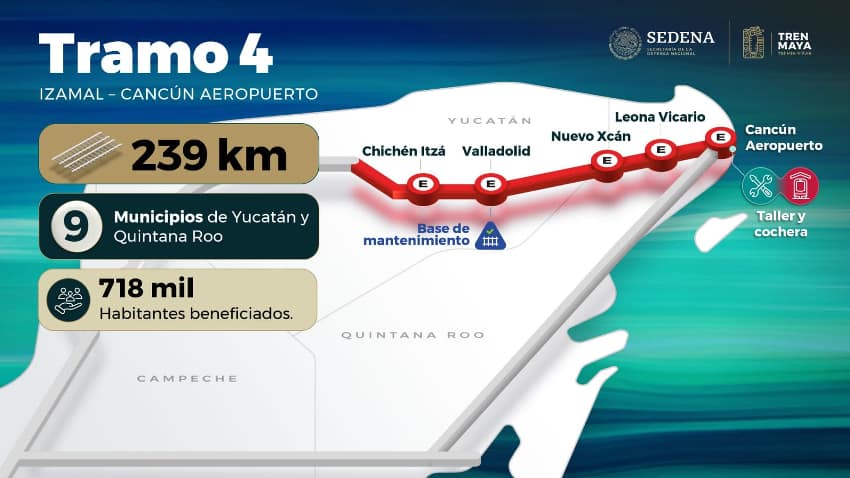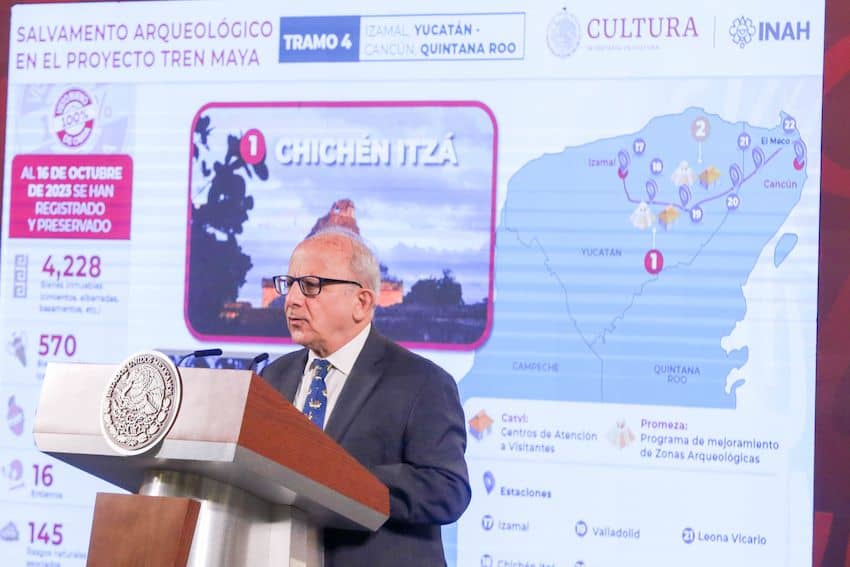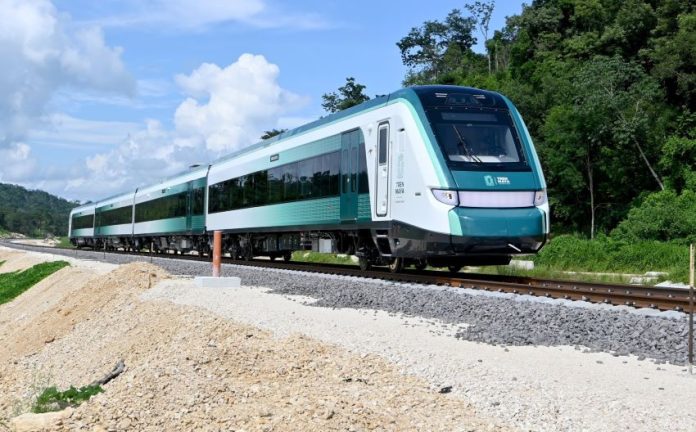The Palenque to Cancún sections of the Maya Train are on track to open in two months’ time, General Óscar David Lozano Águila, director of the Tren Maya S.A. company, said on Monday.
At President López Obrador’s morning press conference, Lozano Águila said that 239 kilometers of double track on Section 4, running from Izamal, Yucatán, to Cancún, Quintana Roo, are now 100% complete and currently being leveled.

Work on Section 4 is now focused on finishing the route’s five stations, which are more than 80% complete. The section has already been traveled by President López Obrador, who took several test trips on the train last month.
“We reaffirm the commitment: we are going to inaugurate [the train] in December 2023,” Lozano promised.
He added that 33 of Section 4’s 35 planned vehicular crossings are already operational, as well as 90 out of 92 underpasses and wildlife crossings; 6,585 out of 9,000 electrical poles have also been placed.
Section 4 has already generated 62,000 jobs, of which 72% are held by locals of southeast Mexico and 21% by women. According to Lozano, the national statistics agency (INEGI) has found that 718,000 inhabitants of the region are already benefiting from infrastructure associated with the Maya Train.

Lozano indicated that the route from Izamal, Yucatán, to Palenque, Chiapas (Sections 1-3) would also be inaugurated on Dec. 15, but gave much fewer details on its progress. The ambitious and controversial Maya Train project has faced numerous setbacks, including technical obstacles, lack of materials, and injunctions from environmental groups.
Diego Prieto Hernández, head of the National Institute of Anthropology and History (INAH), also spoke at the press conference about the completed archaeological rescue work on Section 4.
He said that 4,228 structures had been salvaged during the work, as well as 570 movable artifacts, 16 human burial sites, and 145 natural features containing evidence of human presence.
In addition, Prieto mentioned that the Program for the Improvement of Archaeological Zones (Promeza) had contributed significant new tourist and research facilities to the great archaeological sites of Chichén Itzá and Ek Balam, including several kilometers of interpretive trails with signage explaining their historical significance.
“[The Maya Train] is not just a communication system; it is a comprehensive development project that involves strengthening the identity and inclusion of communities, the sense of belonging, the affirmation of our culture and the greatness of the civilizations that have preceded us,” he said.
With reports from La Jornada and El Universal
